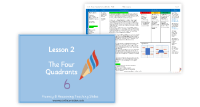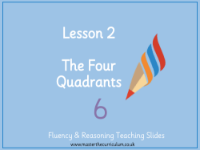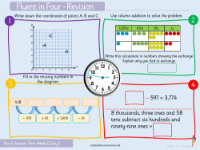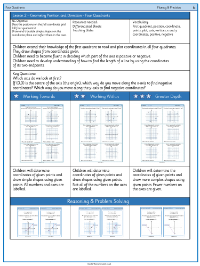Position and Direction - Four Quadrants - Planning
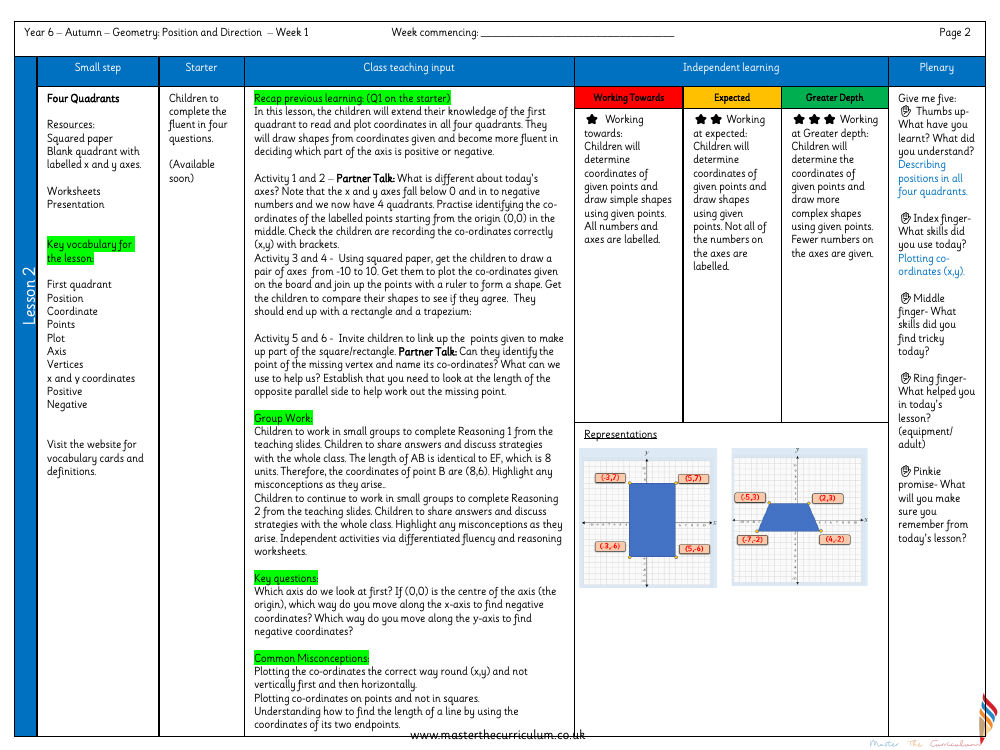
Maths Resource Description
In a comprehensive Year 6 geometry lesson focusing on Position and Direction, students are introduced to the concept of Four Quadrants using resources such as squared paper and a blank quadrant grid with labelled x and y axes. The lesson aims to build upon the children's existing understanding of the first quadrant by teaching them how to read and plot coordinates across all four quadrants. Key vocabulary including terms such as 'axis', 'coordinates', 'vertices', and 'plot' are central to the lesson, with vocabulary cards and definitions available to aid learning. The class will engage in activities that require them to identify the coordinates of labelled points, starting from the origin, and correctly record them using brackets. They will also practice drawing shapes such as rectangles and trapeziums by plotting given coordinates and using rulers to connect the points.
Through partner discussions and group work, the lesson encourages collaborative learning and problem-solving. Students are challenged to deduce the missing vertex of a shape by examining the lengths of parallel sides and to share their strategies with the class. Key questions prompt them to think about the order of axes and the direction in which to move to find negative coordinates. The lesson is designed to address common misconceptions, such as the correct order for plotting coordinates and the method for finding the length of a line segment using its endpoints. A reflective 'Give me five' activity concludes the lesson, where students recap what they have learned, the skills they used, and what they found challenging. Differentiated outcomes are outlined for varying levels of understanding, from 'Working towards' to 'Working at Greater depth', with each level involving tasks of increasing complexity in determining coordinates and drawing shapes, with varying degrees of assistance from the labelled axes.
